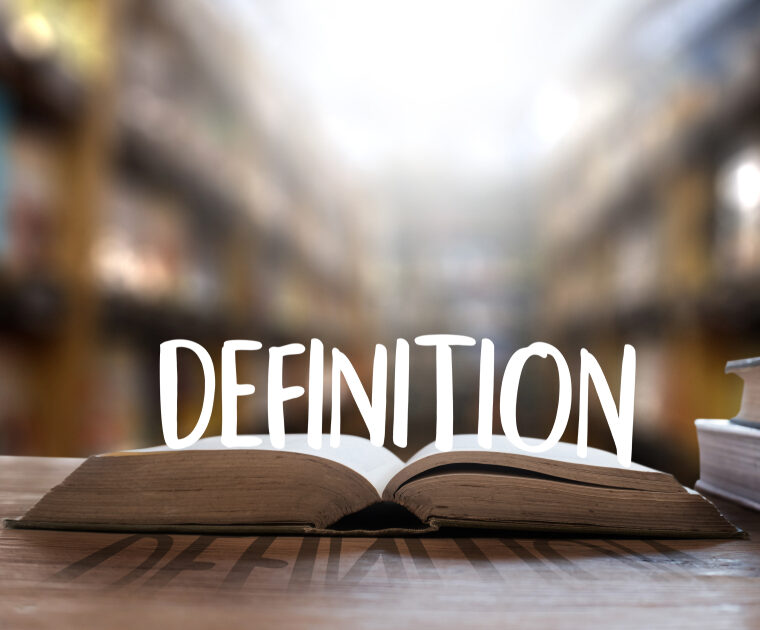
Do you students notice when authors provide definitions and examples? Many nonfiction authors use these and other types of details when they describe concepts like forces, magnets, weather and so forth. Readers need to recognize these types of details to understand these concepts. I was surprised one day to find out the middle grade students I was teaching really did not understand these terms.
Common Types of Details
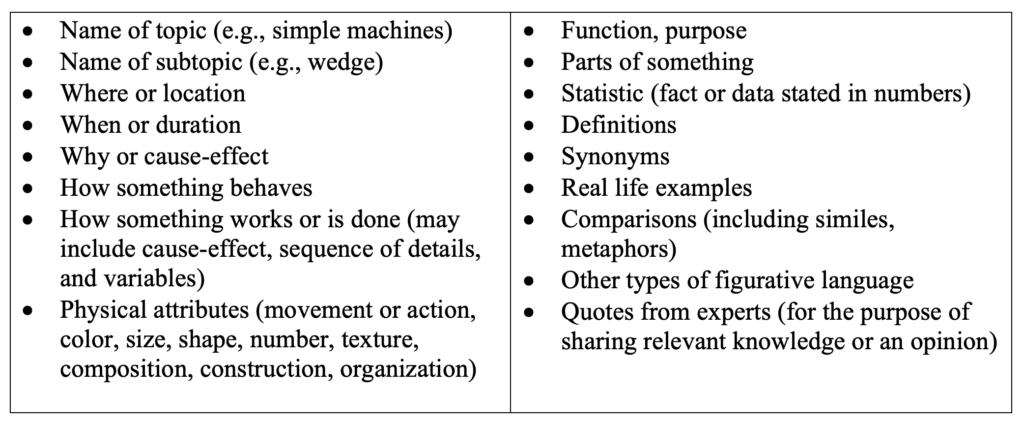
Text Excerpt with Examples
Take a moment to read the page below from Using Force and Motion (National Geographic Reading Expeditions, Phelan, 2003)–an easy introduction to the concepts of force, gravity, friction, etc.
In the second paragraph, towards the end, the author introduces the topic of force and defines it – “a force can be a push or it can be a pull.” Then he gives an example of a force – “The paddle gets a big pull from the person’s arms to push the kayak through the water” and a second example – “The kayak also gets a push from the water that is rushing behind it.” In the last paragraph, he offers details about the effect of forces like the wind – “make all objects move” and “make objects slow down, speed up, change direction, or stop.”
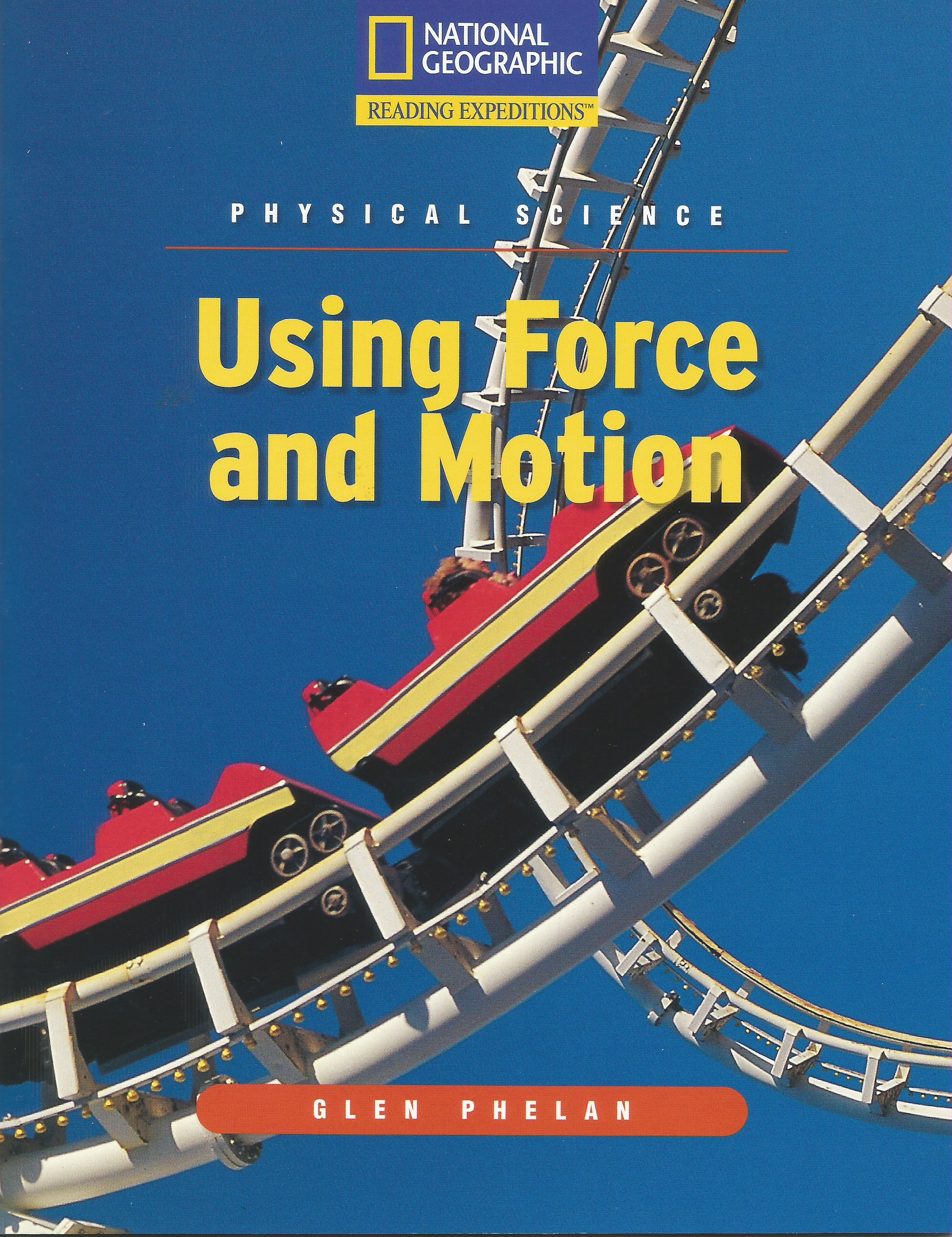
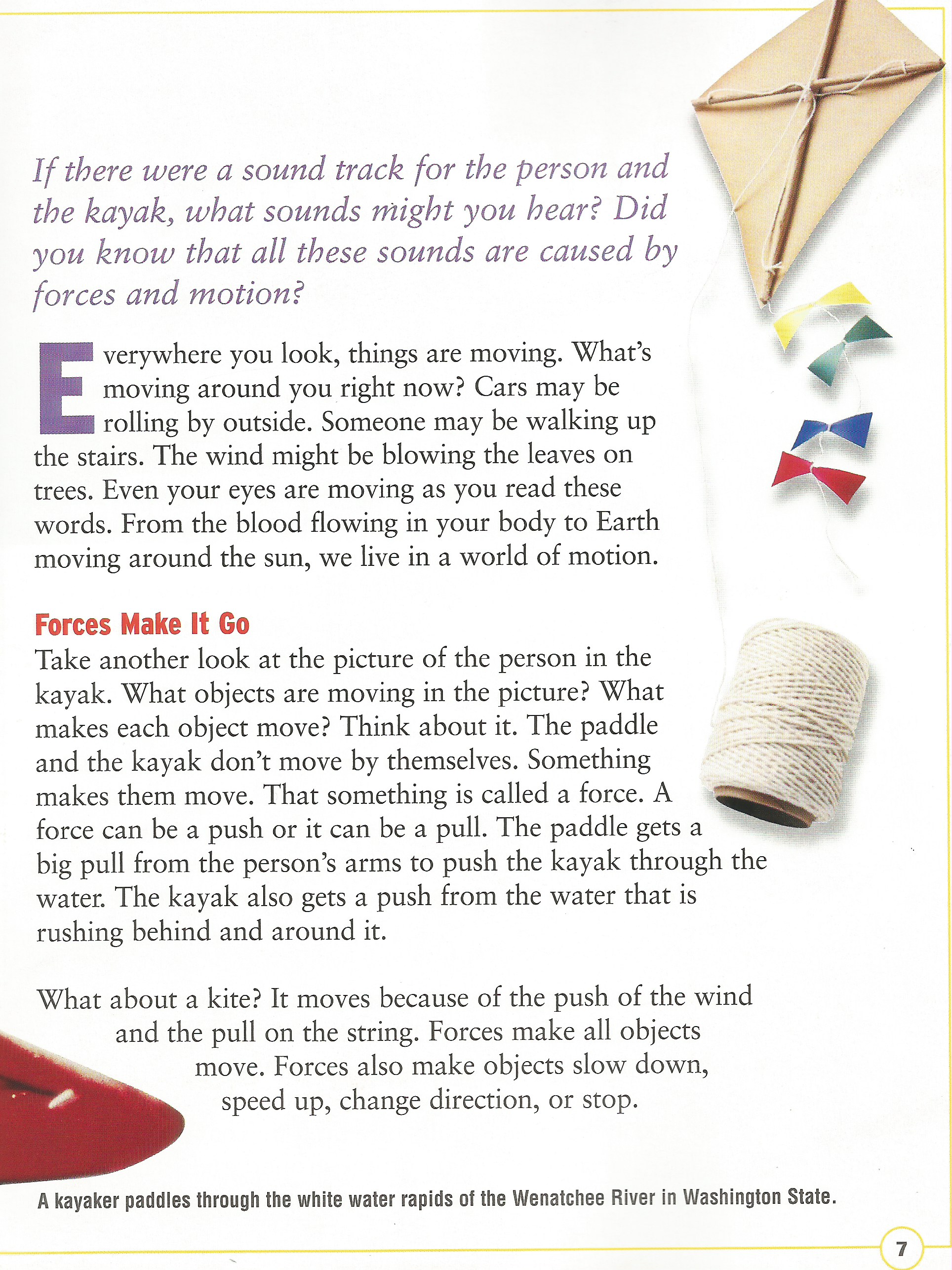
After students read this text, we want them to be able to say, “Oh! The author just defined what a force is when he wrote, ‘A force can be a push or it can be a pull’ and then he gave me an example of that which is when a person kayaks and they pull on the paddle, it pushes the kayak through the water. That’s like when I…”
So how do we do teach for this understanding?
Close Read & List Types of Details
During a lesson, I started an anchor chart entitled “What types of details does the author use to teach us?” and listed details like definition, example, effect. When I began to ask students to determine whether a new detail (after I’d modeled) was a definition or an example, they couldn’t do it. I realized that the students were not clear about what I meant by “definition” and “example.” I added definitions of the details to the chart, but there was still some confusion.
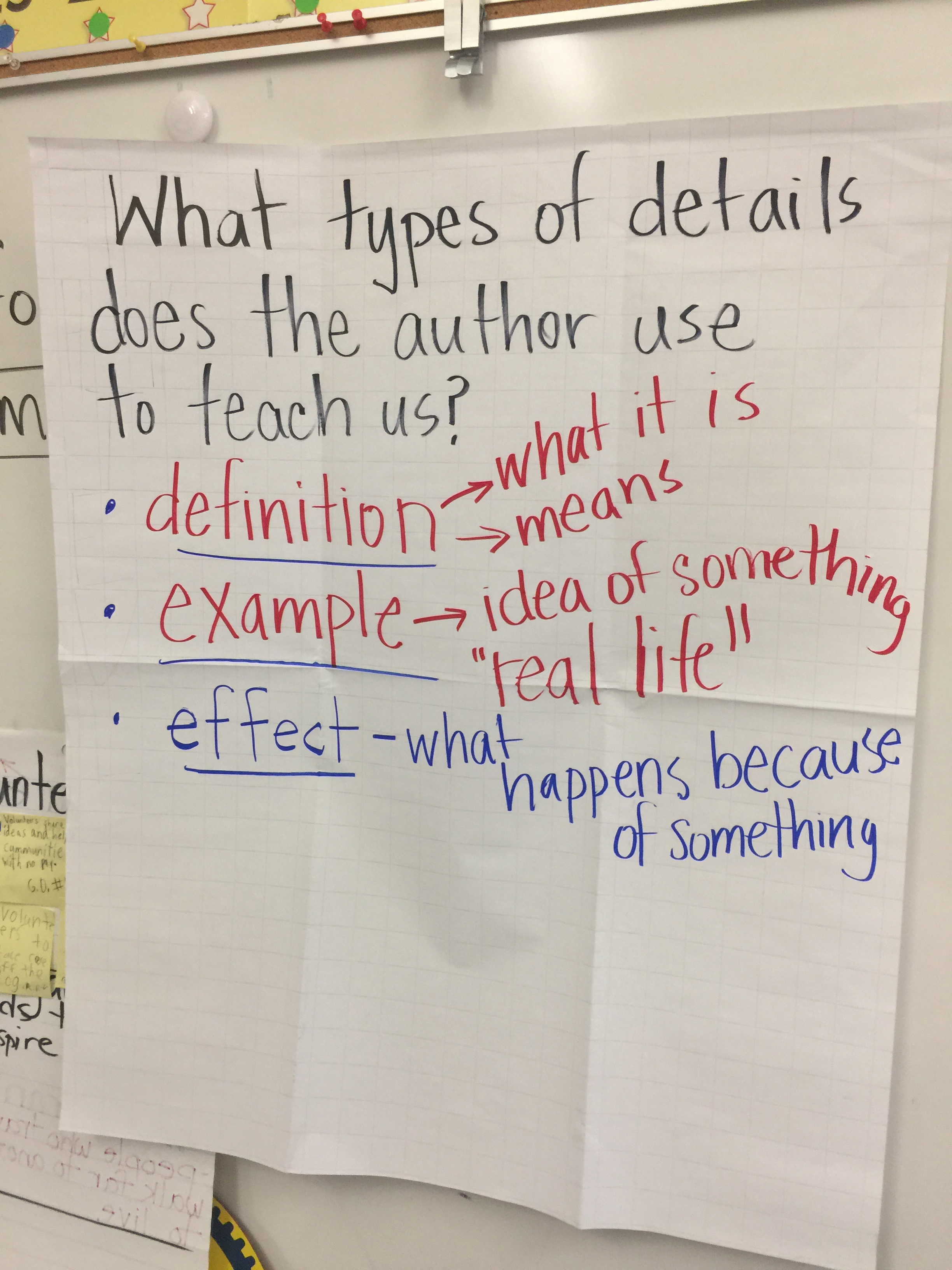
So I stopped and led a short discussion with an easier concept. We defined “fruit” and listed examples. (When I asked for examples of fruits, one of the students said, “Squishy!” so I knew I was right in his ZPD 😉 This seemed to help as we moved to carefully reading the last paragraph of the excerpt!!!!!
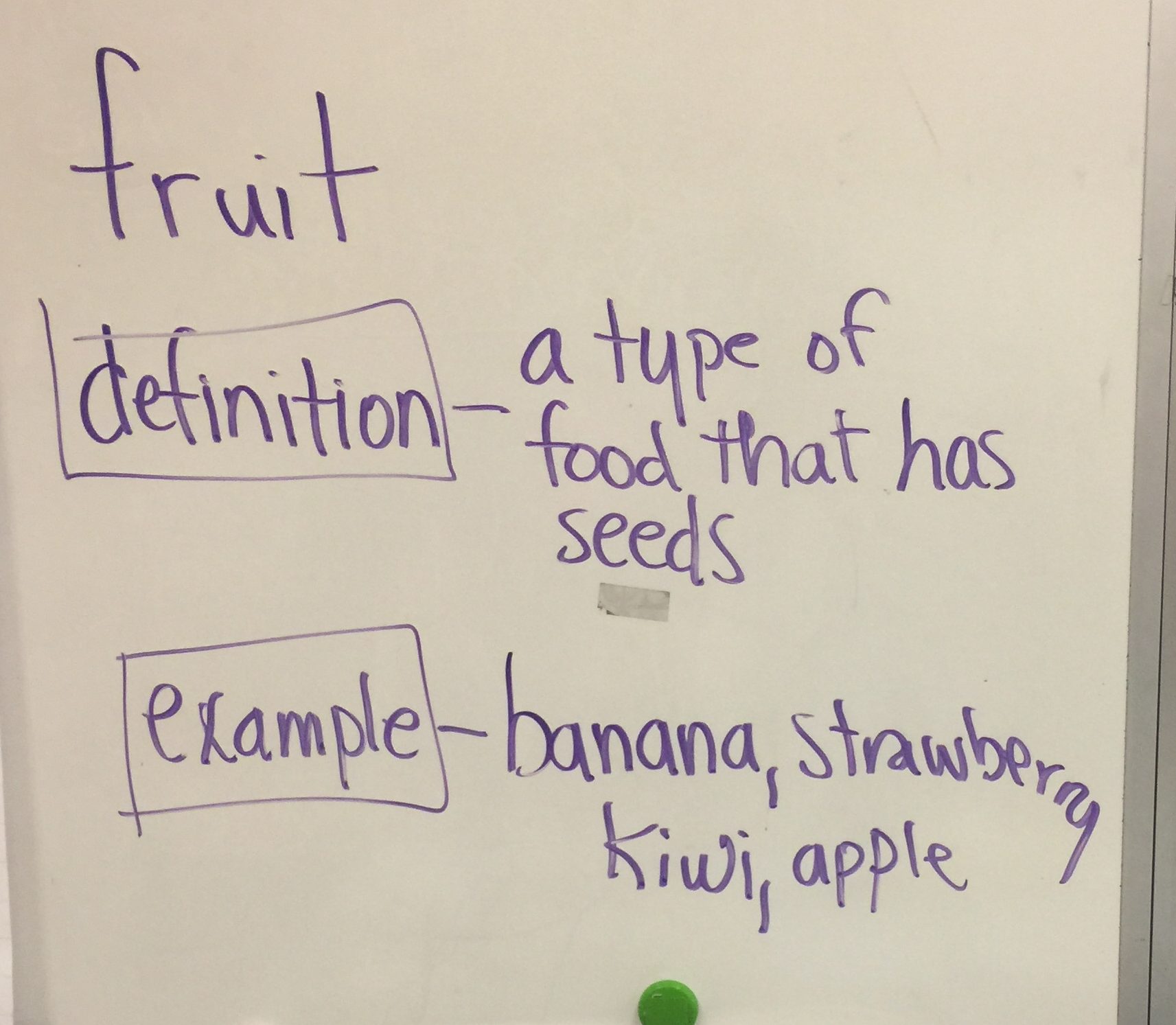
The more I do this, the more I’ve learned not to take for granted what students understand in grades 2-8. Even for words like definition and example, they (even middle school students 😉 may have a superficial understanding.
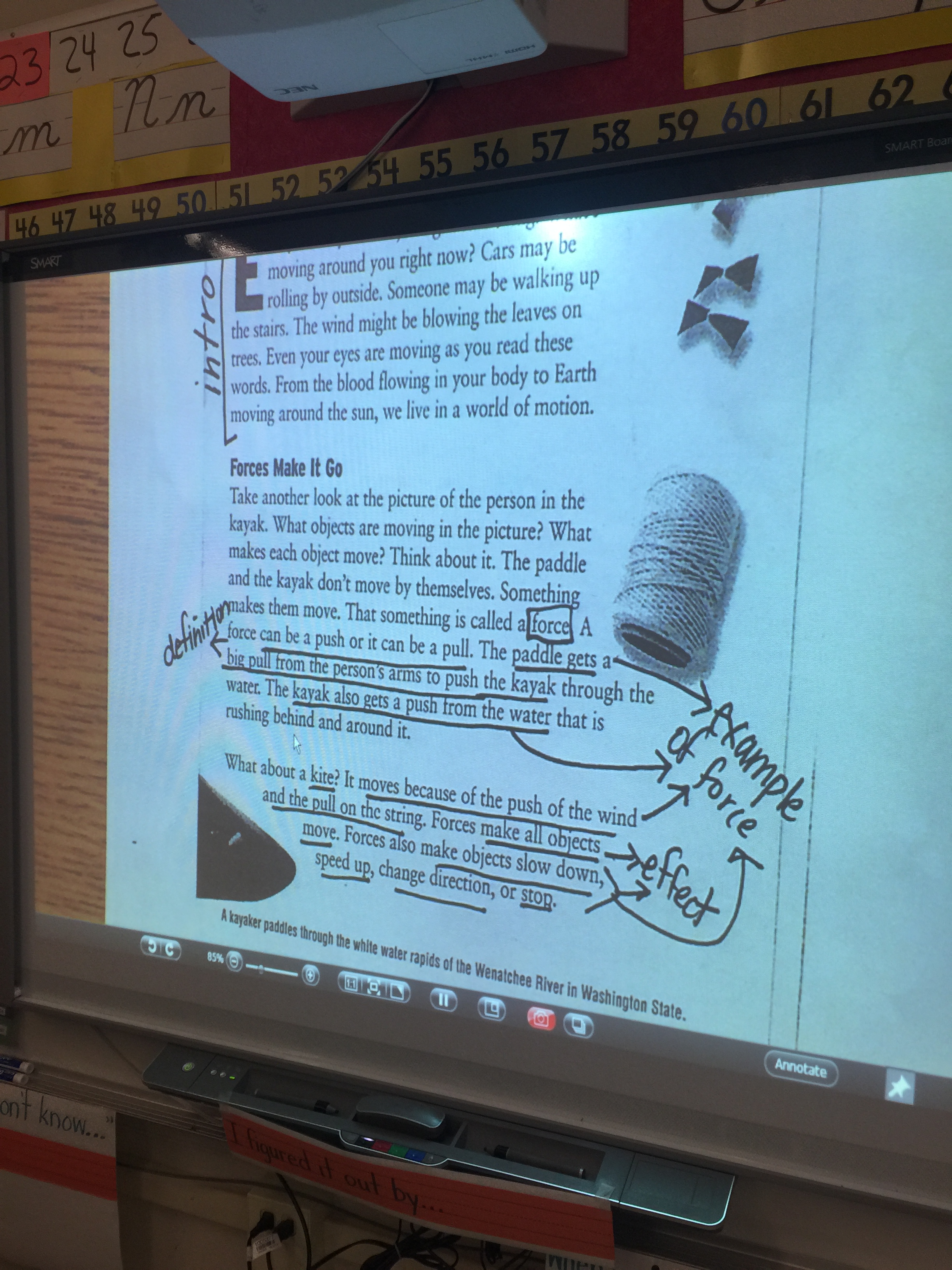
Hope this helps.
S
UPDATED 2/10/21
